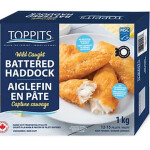Seven Chilean firms have teamed with the Monterey Bay Aquarium to launch CSARP+, a program designed to renew efforts to reduce antibiotic usage across the South American country’s salmon-farming industry.
In 2019, companies comprising more than 90 percent of Chile’s salmon production vowed to reduce their use of antibiotics by 50 percent and seek a “Good Alternative” rating from the Monterey Bay Aquarium’s Seafood Watch program by 2025 through participation in the newly created Chilean Salmon Antibiotic Reduction Program (CSARP).
With the 2025 deadline approaching, attaining that goal is looking increasingly unlikely, according to SalmonChile President Arturo Clement.
“Unfortunately, in the last few years, we [had] a lot of environmental issues that really changed the trend of reduction we had in the first three years. We have a lot of problems of oxygen in the farms that [increased] the levels of stress in our fish, so unfortunately, we started using more antibiotics,” he said at the CSARP+ launch event at the 2024 Seafood Expo Global in Barcelona, Spain, on 24 April. “But, I think we’re going to have a reduction for 2023, and we need to do a big effort over the next two years in order to try to get as close as we can on the goal.”
CSARP’s goal was to achieve 206 grams of antibiotics used per metric ton (MT) of Chilean farmed salmon by 2025. The industry got closest in 2019 at 375 grams per MT, with the number rising to 409 grams per MT in 2020, 471 grams per MT in 2021, and 489 grams per MT in 2022. The figures for 2023 have not yet been released.
However, a sharp dichotomy has emerged between usage among the seven companies that have joined the CSARP+ program – Australis Seafoods, Blumar, Camanchaca, Cermaq, Cooke Chile, Multi X, and Nova Austral – which jointly reduced their antibiotic usage to 280 grams per MT in 2022. Non-CSARP+ members, meanwhile, increased their usage to 737 grams per MT.
Monterey Bay Aquarium created the CSARP+ program to draw a distinction between the two groups, according to Monterey Bay Aquarium Global Ocean Conservation Vice President Jennifer Dianto Kemmerly.
“They're serious about this, and they know they have to come together to find a solution because it's ultimately going to help the entire industry. We're looking for them to also motivate the rest of the industry by pulling together and meeting these goals,” Kemmerly told SeafoodSource. “One of the biggest limiting factors in our Seafood Watch assessment of Chilean farmed Atlantic salmon is the chemical use and, specifically, the antibiotic use and the ecosystem impacts. We feel that this work will have a transfer effect beyond the farmed salmon industry and demonstrate in Chile and to other countries and other seafood commodity groups a model for how collaboration, innovation, and persistence can pay off.”
To maintain CSARP+ status, companies must continue to reach new, individual reduction targets annually and agree to share data about their progress, demonstrate continuous improvement, and show evidence of innovation and collaboration. Kemmerly said Monterey Bay Aquarium will continue to work with other CSARP members to improve progress “with the hope more companies will join CSARP+ in the future.”
Camanchaca CEO Ricardo Garcia said the biggest factor preventing the attainment of the antibiotic-reduction goal has been the failure of the industry to develop an effective vaccine for salmon rickettsial syndrome (SRS), which is the reason for 90 percent of antibiotic treatments in Chile.
“We were very optimistic a few years ago that the LiVac vaccine from Pharmaq would generate the results that will lead us to reduce [antibiotic use] even more than 50 percent … This is a vaccine that is being injected at the hatchery level before the fish goes to the ocean and was supposed to provide enough protection within the ocean stage. Unfortunately, the vaccine has not proven that effective,” Garcia said at the event. “Despite the refinements that we've made in our operations and the treatment [process], we still must use antibiotics. We don't like antibiotics, but we dislike even more seeing fish suffering from terrible diseases. The solution is not to use or not use antibiotics; the solution is to work to get vaccines or other elements that prevent fish from getting disease.”
Garcia said he is hopeful other antimicrobial options being developed, such as ...








